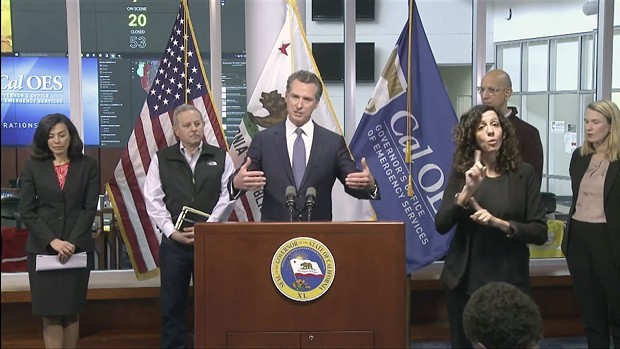As educators across the state finalize back-to-school plans, Gov. Gavin Newsom today announced new criteria on how schools should operate amid the Covid-19 pandemic.
“Learning in the state of California [is] simply non-negotiable,” the governor said during a virtual press conference. “Schools must provide meaningful instruction during the pandemic whether they are physically open or not. We all prefer in classroom instructions for all the obvious reasons … but only if it can be done safely.”
Criteria 1: In-person school is based on local health data
In order for schools to have in-person classes this fall, Newsom said that the county in which the school is located must be off the state’s monitoring list for 14 consecutive days.
“Schools that don’t meet this requirement, they must begin the school year this fall through distance learning,” Newsom said.
The state Department of Public Health maintains a list of counties seeing an increase in transmission and hospitalization and have limited ICU and ventilator capacity.
Criteria 2: Mask requirements
All staff and students in the third grade and up must wear a mask at all times. Students in the second grade and below are encouraged to wear either a mask or a face shield.
Criteria 3: Physical distancing
All staff must maintain a six-foot distance between each other and students at all times. Schools will be required to have daily temperature checks and hand-washing stations.
Newsom said deep sanitation and disinfection must also be a priority and that schools are required to create quarantine protocols if students or staff contract COVID-19.
Criteria 4: Testing and contact tracing
School staff will be required to get tested for COVID-19 on a regular basis and the state contact tracing workforce will be directed to prioritize schools.
Criteria 5: Rigorous distance learning
For schools that can’t return to in-person classes, teachers will be required to have live daily interactions with their students. Teachers must assign work equivalent to that done during in-person classes. English language learners and special education students should have adapted lessons.
Access to internet and devices has also been marked a high priority, with the state investing $5.3 billion in additional funding to make learning more equitable.
According to the state Board of Education, 20 percent of California students—1.2 million—can’t access the internet at home. The digital divide is even worse in rural areas, according to a 2019 analysis by EdSource which found only a third of California households in rural areas have internet compared to 78 percent in urban areas.
Newsom also announced guidelines for what schools should do in the event of an outbreak. The governor said that if 5 percent of a school tests positive for COVID-19, then the school must close. If 25 percent of schools in a district have positive cases that reach that 5 percent threshold, then the district must be closed within a 14-day period.
“None of us want to see education virtualized—at least I don’t,” Newsom said. “The one thing we have the power to do to get our kids back into school is look at this list again: wear a mask, physical distance, wash your hands, minimize the mixing. The more we do on this list and we do it at scale, the quicker … we’re going to mitigate the spread of this virus and kids are back in school.”
In a statement released on Friday afternoon, Dr. Steve Herrington, the Sonoma County Superintendent of Schools, addressed Newsom’s announcement.
“(The Sonoma County Office of Education) SCOE will now work closely with local school leaders and our public health department to interpret these state directives and how they impact the plans that schools have been diligently creating throughout the summer. Additionally, SCOE will work with our public health partners to ensure that Sonoma County has adequate testing and contact tracing capacity to ensure a safe return to school once Sonoma County is off the watch list,” Herrington said.
“I will meet with Sonoma County’s 38 superintendents, as well as charter school and private school leaders, early next week to discuss this new guidance in detail. SCOE has been and will continue to provide professional development and other supports to assist districts in building robust distance learning options for all students. Sonoma County schools are committed to serving families with high-quality instruction and supports, regardless of the current conditions under COVID-19,” Herrington continued.











